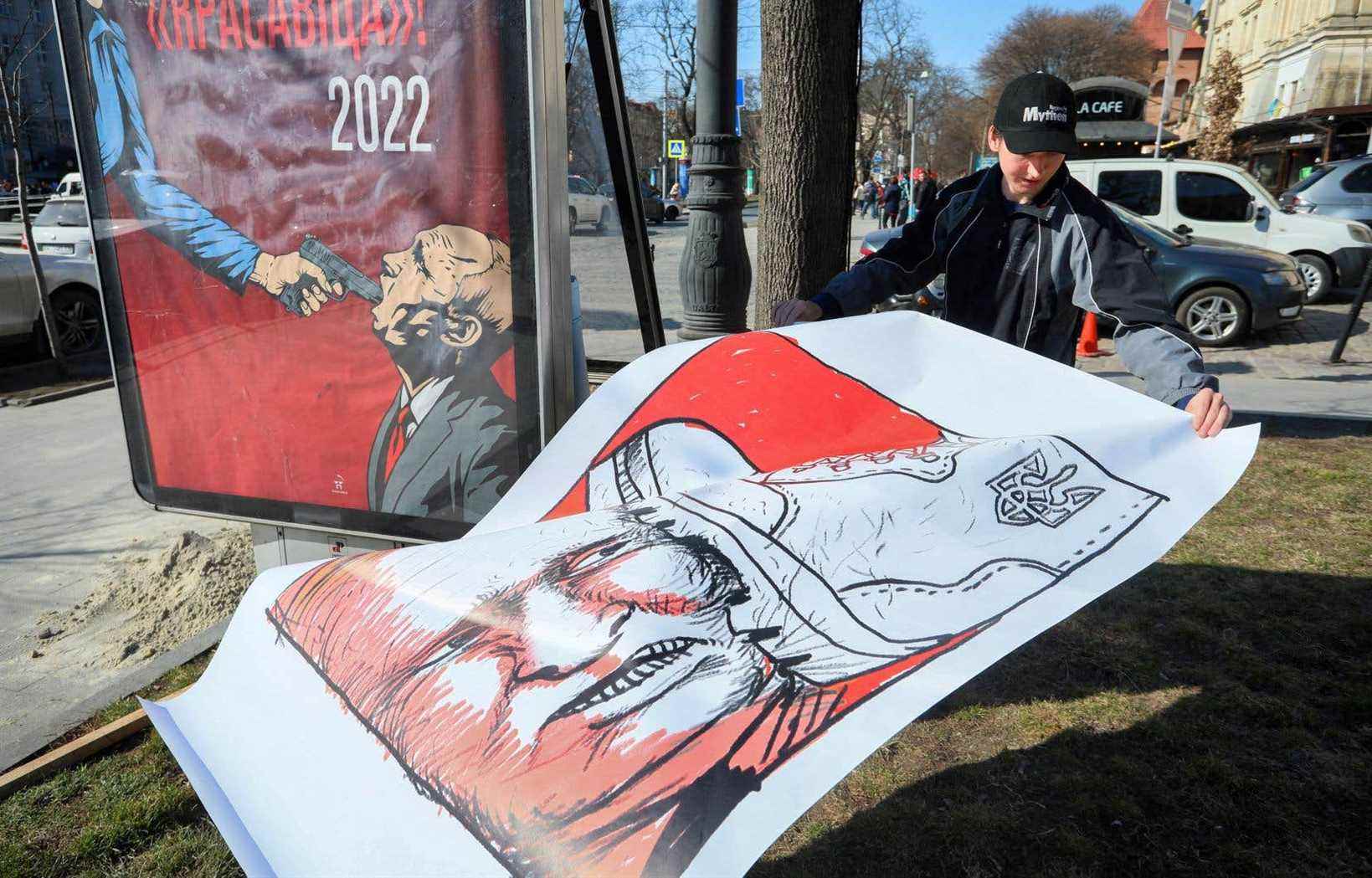Posters glorifying heroes of the conflict with Russia, caricatures of Vladimir Putin or souvenirs celebrating Ukrainian figures: in Lviv, the cultural capital of Ukraine, which attracted many visitors before the war, Ukrainian art has put for three weeks at the time of the war.
In the Reklama Zovnichnia printing house, a drying glossy poster shows a Ukrainian tractor transporting a stationary Russian tank. Next to it, a cartoon of the skeleton of a slain Russian invader, on which grows a sunflower, one of Ukraine’s national emblems, appears on a computer screen.
Since the beginning of the Russian invasion in Ukraine, more than three weeks ago, the printing works has been producing posters, banners and even stickers with resolutely patriotic accents.
Steeped in the particularly strong smell of ink, the studio is one of many outlets in Lviv for wartime messages urging Ukraine to victory.
For Volodymyr Kotovitch, its 26-year-old director, “it’s not propaganda”. “These are patriotic slogans that motivate our people and our soldiers,” he says, climbing on reams of industrial paper stacked on the floor of the workshop.
Since February 24, his company has been devoting 80% of its time to printing such posters, its usual activity having been reduced to a trickle.
Calls to Arms
Lviv residents readily admit that kyiv is the nerve center of the country. But they argue that their city, populated by more than 700,000 people before the war, is home to the soul of the Ukrainian nation.
A few weeks ago, the city, a tourist hotspot attracting many visitors, everywhere showed its cultural inclination: the walls were lined with posters for concerts or art exhibitions. And you could listen to buskers on the cobbled streets of the city center.
But the Russian invasion has radically changed the situation, and Lviv is now adorned with calls to take up arms.
On a billboard, we see Russian President Vladimir Putin, his face crushed to the ground by a boot bearing the Ukrainian trident. On another, a Russian bear is devoured by a badger wearing the yellow armband of the Ukrainian armed forces.
“Who dares to attack us with a sword will be killed by this sword”, can we read on the poster, which solicits donations to contribute to the war effort.
On the facade of the opera, three banners float in the air, each representing heroes of the conflict.
The first praises the “Ghost of kyiv”, a mythical character who appeared at the start of the conflict and who, according to legend, shot down several Russian planes on the first day of the invasion. Another pays tribute to border guards killed at their post. The third, finally, represents an engineer who sacrificed himself to thwart the advance of Russian armored vehicles.
The exploits — and even the existence — of some of these men are disputed. But they all tell the story of a Ukraine on the road to victory.
Volodymyr Kotovitch, the director of the printing works, knows full well that emotion has partly taken over, distorting the facts.
Memories of war
For several days, everywhere in the streets of Lviv have been flourishing messages in support of the Ukrainian forces.
Here, on a poster pasted on an arch in the city center, the Russian imperial eagle is crossed out with a blue and yellow cross, the colors of Ukraine. There, a bridge is adorned with the image of a Molotov cocktail, a symbol of Ukrainian resistance.
Black-and-white flyers showing a determined soldier above whom jets hover are crudely taped to building gutters.
Proof of the popularity of this new visual art, souvenir shops are already selling all kinds of trinkets to the glory of Ukraine.
In the Kram store, tote bags display the image of President Volodymyr Zelensky with his fist raised in the air. Chocolate bars bear the portrait of Taras Shevchenko, a great Ukrainian literary figure of the 19th centuryand century.
“Propaganda or not, the Russians have come to our land, and we must defend ourselves,” said a saleswoman, Mikhaïlyna Yarmola, 21.
She points to the store’s most popular item, sweets with messages of defiance against Russian warships.
“People buy them as gifts or take them away as souvenirs if they go abroad,” she says.
